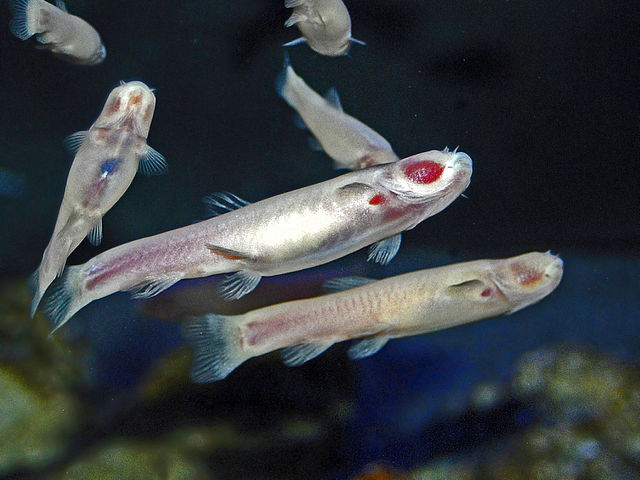The viviparous brotulas form a family, the Bythitidae, of ophidiiform fishes. They are known as viviparous brotulas as they generally bear live young, although there are indications that some species do not. They are generally infrequently seen, somewhat tadpole-like in overall shape and mostly about 5–10 cm (2–4 in) in length, but some species grow far larger and may surpass 60 cm (2 ft).
Viviparous brotula
Cavefish or cave fish is a generic term for fresh and brackish water fish adapted to life in caves and other underground habitats. Related terms are subterranean fish, troglomorphic fish, troglobitic fish, stygobitic fish, phreatic fish, and hypogean fish.
Phreatichthys andruzzii showing the pale colour and lack of eyes typical of cavefish. The large red spot on the head is the blood-filled gills, visible through the semi-transparent gill cover
As typical of cavefish, Typhleotris madagascariensis is an opportunistic feeder on various invertebrates
The waterfall climbing cavefish has several adaptions that allow it to climb and "walk" in a tetrapod-like fashion
The Mexican blind brotula and other cave-dwelling brotulas are among the few species that live in anchialine habitats





